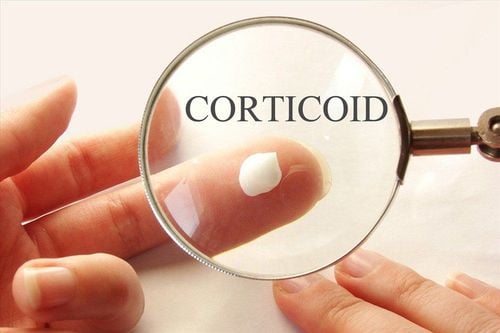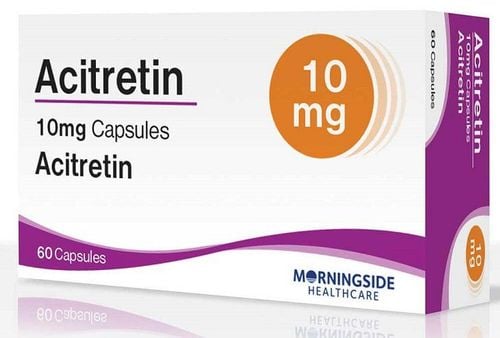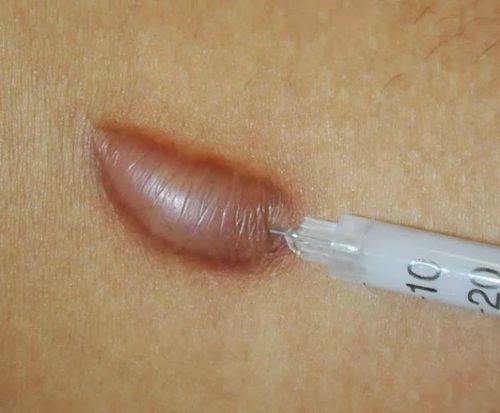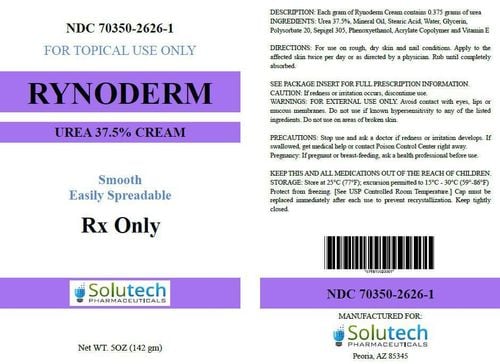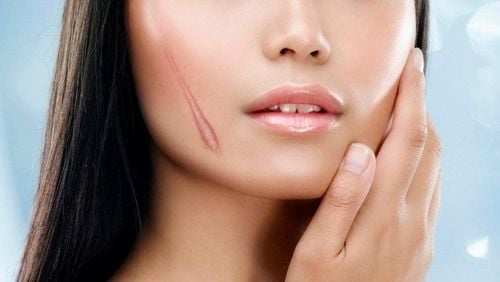This is an automatically translated article.
Hatafluna drug is often prescribed by doctors to treat a number of dermatological diseases such as eczema, psoriasis, atopic dermatitis, contact dermatitis, ... To make Hatafluna drug promote its optimal therapeutic effect, You need to follow all the instructions for taking the medicine that your doctor has recommended.
1. What is Hatafluna?
Hatafluna belongs to the group of drugs for the treatment of dermatological diseases, often recommended to be used to reverse skin diseases, discoid lupus erythematosus, psoriasis, lumpy itch,... Hatafluna is made in the form of a topical cream. leather and packed according to the box specification of 1 tube x 10g.
Each tube of Hatafluna topical contains the main active ingredient, Fluocinolone Acetonide, 2.5mg. In addition, the drug also has a combination of other excipients such as: Paraffin oil, Propylene Glycol, Cremophor A6, Cremophor A25, Cetostearyl Alcohol, Stearic Acid, Ethanol 90° and purified water.
The combination of active ingredients in the same formula of Hatafluna helps people who are suffering from dermatological problems to overcome the disease early. According to the manufacturer's recommendations, Hatafluna has a shelf life of 24 months and should be used exactly as directed in the information leaflet attached to the box.
2. Indications – Contraindications to the use of Hatafluna
Hatafluna is commonly prescribed by doctors to treat the following dermatological conditions:
Dermatitis, such as contact dermatitis, atopic dermatitis, and neurodermatitis. Eczema, including discoid eczema, seborrheic eczema (especially scalp) or atopic eczema. Psoriasis (especially of the scalp), except for widespread psoriasis. Discoid lupus erythematosus. Flat liken. Itching ready. Do not use Hatafluna for the following cases without being prescribed by a doctor:
Patients with hypersensitivity or allergy to the active ingredient Fluocinolone Acetonide or any of the excipients in the drug. People with skin infections caused by bacteria, viruses or fungi (chicken pox/Herpes). People with rosacea or puberty acne. People with syphilis or tuberculosis. People with skin cancer. The person being bullied. The baby is breastfeeding.
3. Dosage and instructions for taking Hatafluna
As recommended by the doctor, before applying Hatafluna, the patient needs to wash the damaged skin. For mild surface lesions can apply a thin layer of medicine about 1 time / day. In case of severe skin damage, the drug should be applied 2-3 times a day.
Patients need to apply the exact dose and frequency of medication as recommended by the doctor. Avoid applying the medicine without instructions or letting it come into contact with other healthy skin. If the medicine gets on sensitive areas such as eyes, nose or mouth, you need to quickly rinse with water.
4. Possible side effects when taking Hatafluna
In fact, the drug Hatafluna usually causes few side effects when used. However, similar to other topical steroids, Hatafluna can sometimes cause adverse reactions such as irritation or sensitization at the application site. According to research, patients may experience some of the following side effects during the treatment of dermatological problems with Hatafluna:
Uncommon side effects: Stretch marks, skin atrophy, skin burning. , secondary bacterial infection, facial dermatitis, rosacea or hypersensitivity. Rare side effects: Hirsutism, hypersensitivity, adrenal insufficiency. In addition, patients are also at risk of experiencing systemic side effects or some other local side effects if Hatafluna is used too often, used for a long time, applied extensively or treated with drugs on the skin. areas of skin that are bandaged or prone to rashes. If any adverse effects appear, the patient should stop using Hatafluna and notify the dermatologist as soon as possible for treatment.
5. What should be noted during the use of Hatafluna?
The following are general dermatologist recommendations for all patients being treated with Hatafluna:
When applying Hatafluna to large areas, avoid dressings as this can increase the risk of toxicity. Body. Large amounts of Hatafluna applied over several days can lead to adrenal insufficiency. Caution should be exercised when administering Hatafluna to patients with psoriasis, because the disease may worsen or form pus-filled psoriasis. Hatafluna should be used with caution in people with impaired T-cell function or being treated with other immunosuppressive drugs. The use of Hatafluna for infected wounds without other appropriate antibiotics can cause the infection to spread. Absolutely do not put Hatafluna in the eyes because this can increase the risk of Glaucoma. Children taking Hatafluna are at high risk of hypothalamic-pituitary-adrenal axis deficiency or Cushing's syndrome. Therefore, the use of Hatafluna for children should be limited, if necessary, it should be used only at the minimum dose sufficient to achieve a therapeutic effect. Use Hatafluna during pregnancy only when clearly needed and the benefits outweigh the risks. When using Hatafluna for this subject, only the lowest dose should be applied. Do not apply Hatafluna to the breast before breastfeeding. Only a minimal amount should be applied and long-term use should be avoided in nursing women. People with diabetes need to be careful when using Hatafluna. Avoid using it for more than 3-4 weeks and do not apply it to your face/neck or perineal area. When the drug Hatafluna shows signs of separation or does not stick to the skin, you need to avoid using the drug and talk to a specialist. To ensure the quality of Hatafluna, patients should store it in a cool, dry place, away from direct light or high humidity. Always read the instructions carefully before using Hatafluna and keep it out of the reach of children. Adhering to the above recommendations will help you treat dermatological diseases with Hatafluna more safely and effectively.
6. What drugs can interact with Hatafluna?
It is not clear what drug Hatafluna interacts with. To prevent the risk of drug interactions, before starting treatment with Hatafluna, you should tell your doctor about other topical products or oral medications that are currently being used.
The above is important information about Hatafluna, but it is not a substitute for your doctor's advice. Therefore, in addition to carefully reading the instructions before use, patients should consult with their doctors to achieve the best results.
Please dial HOTLINE for more information or register for an appointment HERE. Download MyVinmec app to make appointments faster and to manage your bookings easily.




